正反馈:霍华德·阿姆斯特朗的伟大发明
Posted 卓晴
tags:
篇首语:本文由小常识网(cha138.com)小编为大家整理,主要介绍了正反馈:霍华德·阿姆斯特朗的伟大发明相关的知识,希望对你有一定的参考价值。
Positive Feedback: Howard Armstrong 1st Great Invention!
电路中的正反馈:霍华德·阿姆斯特朗的伟大发现
01 正反馈
一、前言
正反馈与负反馈是电路系统设计中的重要概念。 在电路系统中使用正反馈可以提高电路增益、制作振荡器等。 正反馈的概念从何而来,又是谁最先想到的呢? 有趣的是,电子线路中的正反馈是一位名叫霍华德·阿姆斯特朗的大学生于 1912 年在他父母的阁楼上发明的。 在 Kathy老师讲述的这段故事中,包括一本正能量的儿童读物,一个对阿姆斯特朗有知遇之恩的邻居,一个奋发向上的移民和一个非常非常重要的线圈。
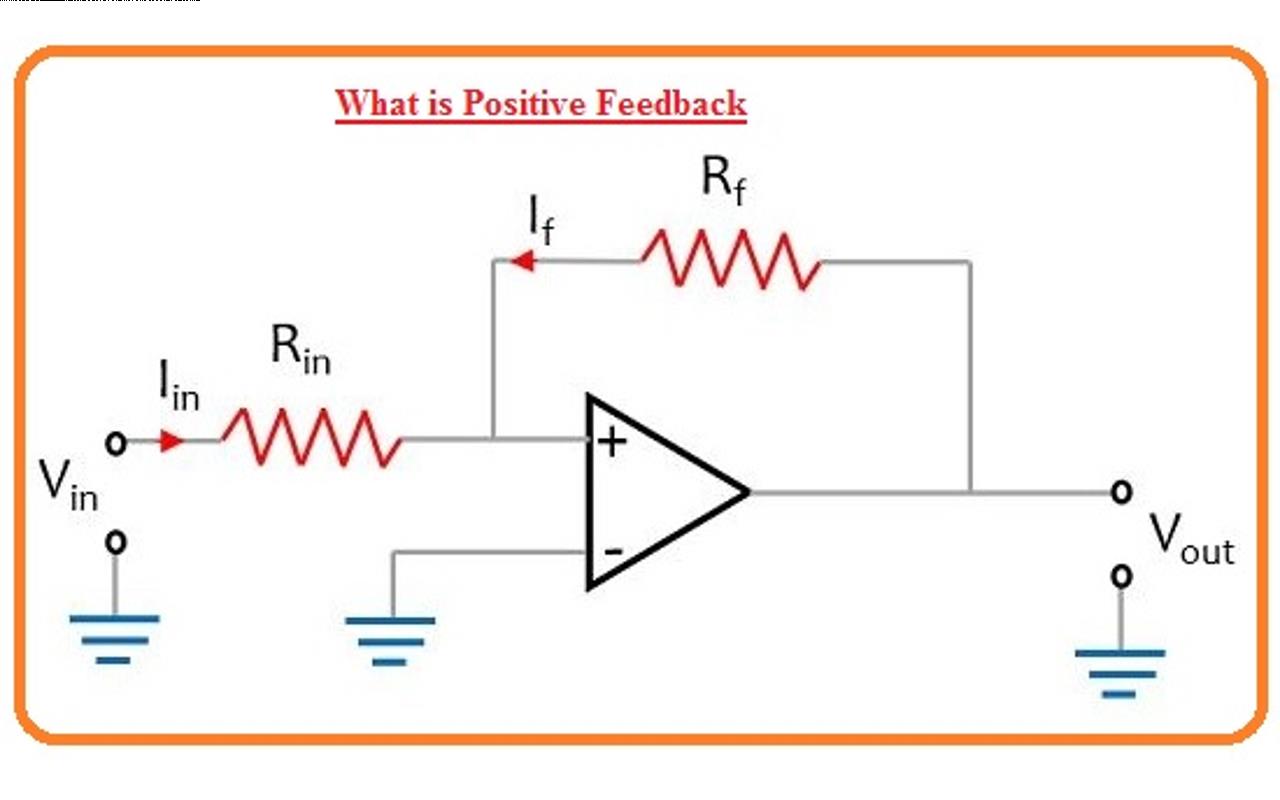
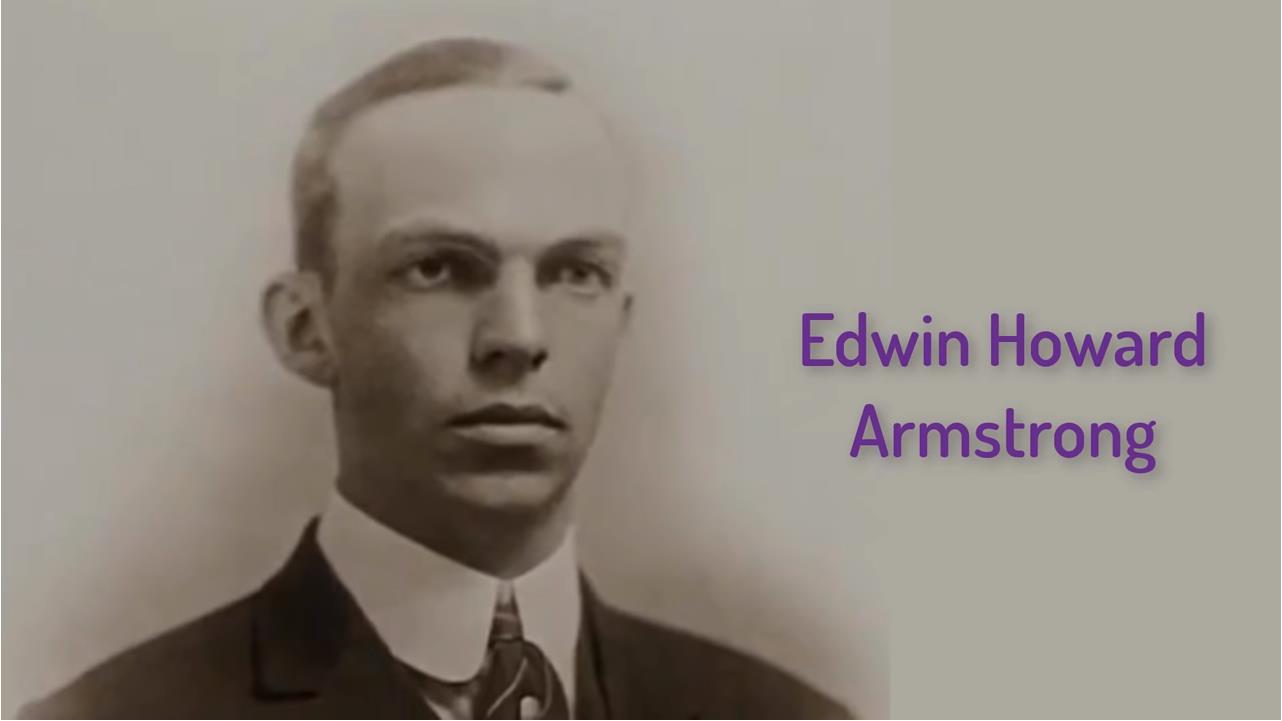
▲ 图1.1.1 霍华德·阿姆斯特朗
二、早年时期
埃德温·霍华德·阿姆斯特朗在曼哈顿和扬克斯长大,他的家庭属于中上阶层家庭。 1904年,他13岁时,父亲送给他一本儿童科技读物 《男孩的发明书》。 在阅读了吉列尔莫·马可尼 (Guillermo Marconi) 的故事后,年轻的阿姆斯特朗迷上了无线电。 很快,他就成了附近的无线电专家, 甚至还建造了一个 125 英尺的天线。他经常为了好玩在天线上爬上爬下。
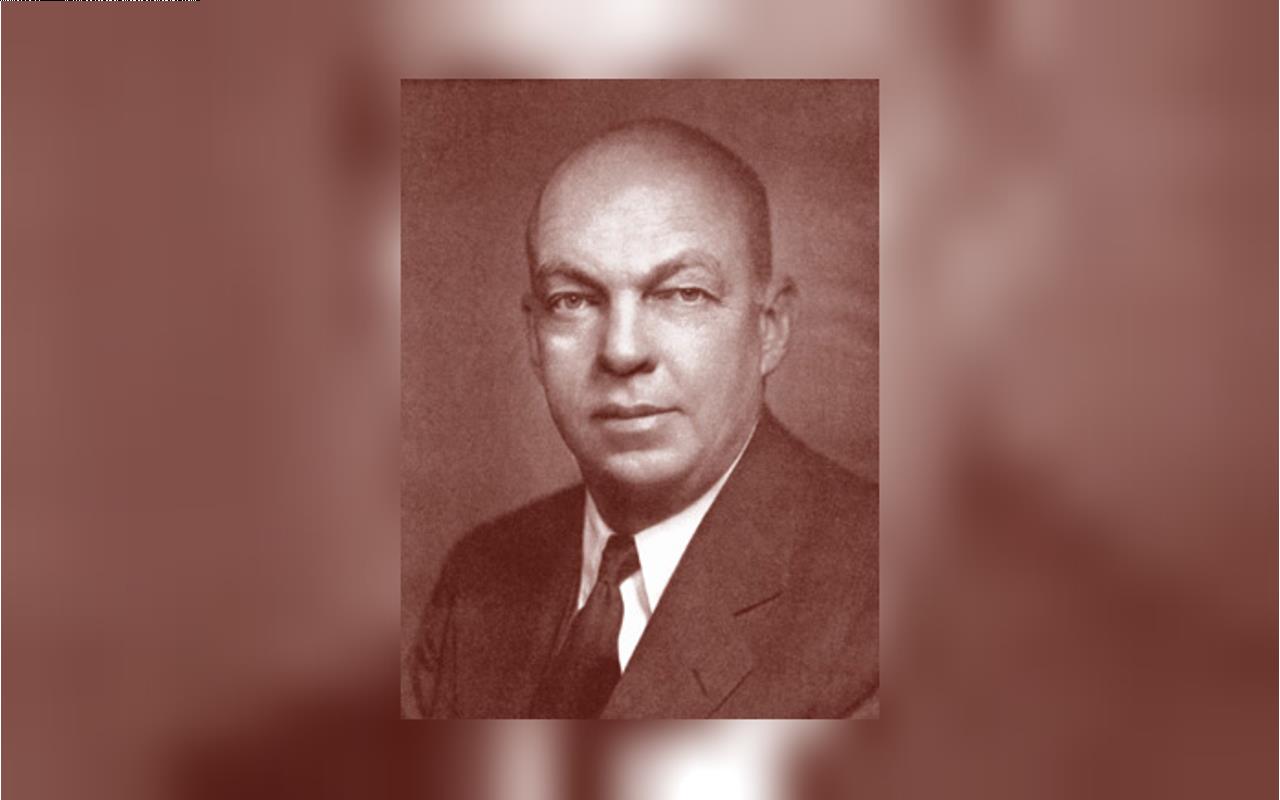
16 岁时,他遇到了当地一位名叫查尔斯·安德希尔 (Charles Underhill) 的工程师。 在接下来的两年里,阿姆斯特朗会在放学后骑自行车到安德希尔家学习无线基础知识。 对于阿姆斯特朗来说最重要的知识并不来自于教科书,而是受到安德希尔的影响,阿姆斯特朗从此成为一位具有独创性的思想家,不会被传统事情所束缚。 晚年时,阿姆斯特朗最喜欢说的一句话:“并不是人们的无知造成了世上的麻烦,而是人们的错误认知造成的麻烦。”
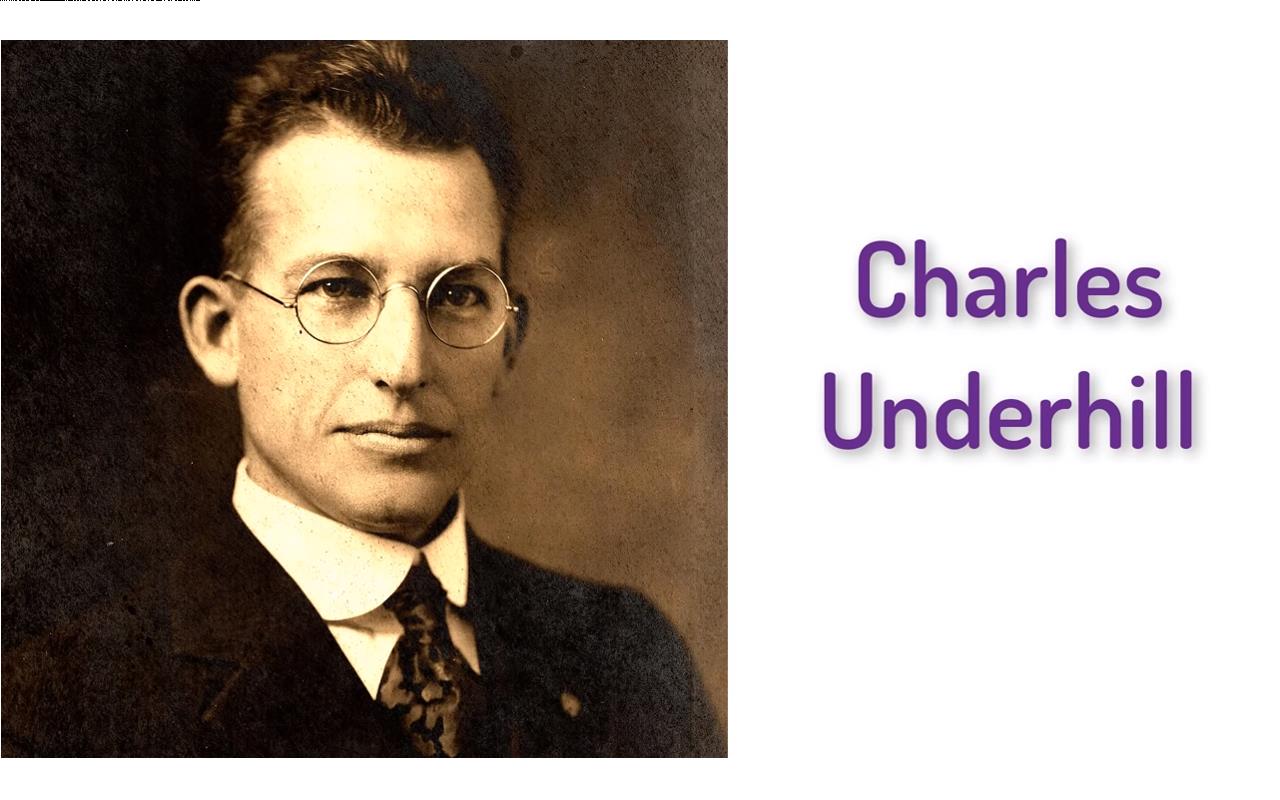

▲ 图1.2.1 查尔斯·安德希尔
三、普平教授
阿姆斯特朗进入哥伦比亚大学学习电子工程,导师是迈克尔·普平教授,从此他不再需要安德希尔的指导了。 普平是一个了不起的人。 35 年前,他 16 岁,兜里只揣着5美分从塞尔维亚移民到美国。 他卖掉了几乎所有的财产买了船票,包括他那件暖和的冬衣。 他天真的认为在美国不需要穿外套,因为他看到油画中美洲原住民都几乎不穿衣服。 结果呢,在来美国的路上他差一点没被冻死, 生生靠着烟囱上取暖才勉强活了下来。
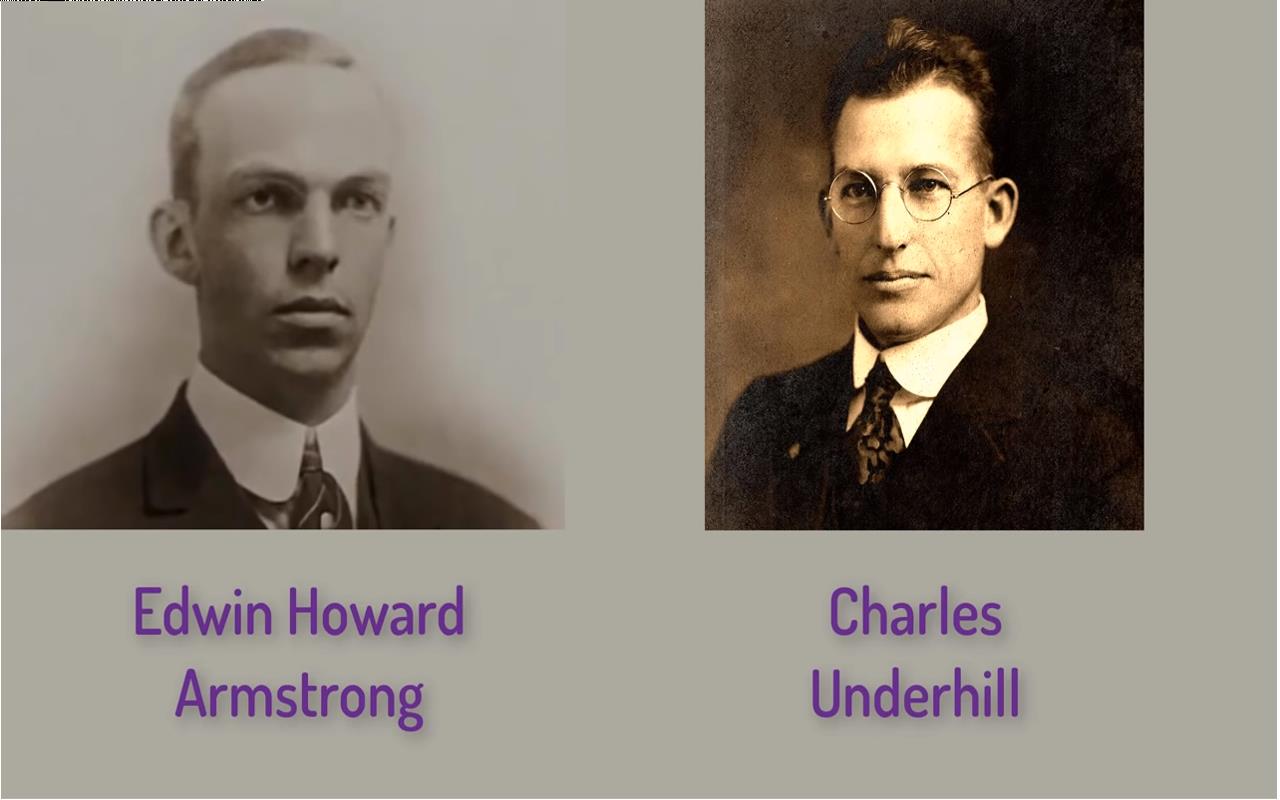
到美国后举目无亲,也没有谋生的技能, 甚至不懂英语, 神奇的是他设法找到了一份工作,并在五年内自学了英语、希腊语和拉丁语,并设法获得了前往哥伦比亚大学学习的奖学金。 随后,他在德国师从赫尔曼·冯·亥姆霍兹,并在那里获得了博士学位,并于 1899 年重新回到哥伦比亚大学,成为其电气工程系的创始人。
同时,他以 50 万美元的价格将自己的一项专利卖给了 AT&T。 尽管他获得了很多财富,但还是继续研究和学习,并紧跟最新的电气技术。
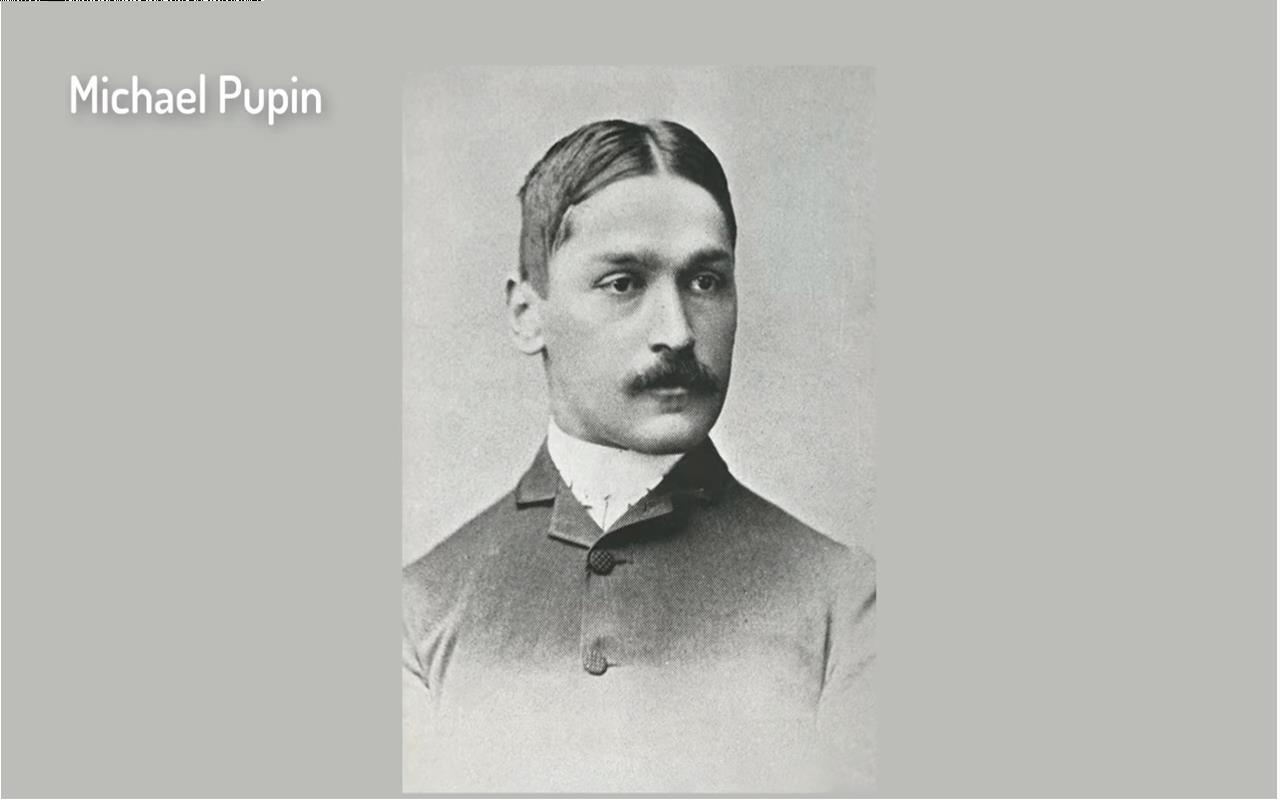
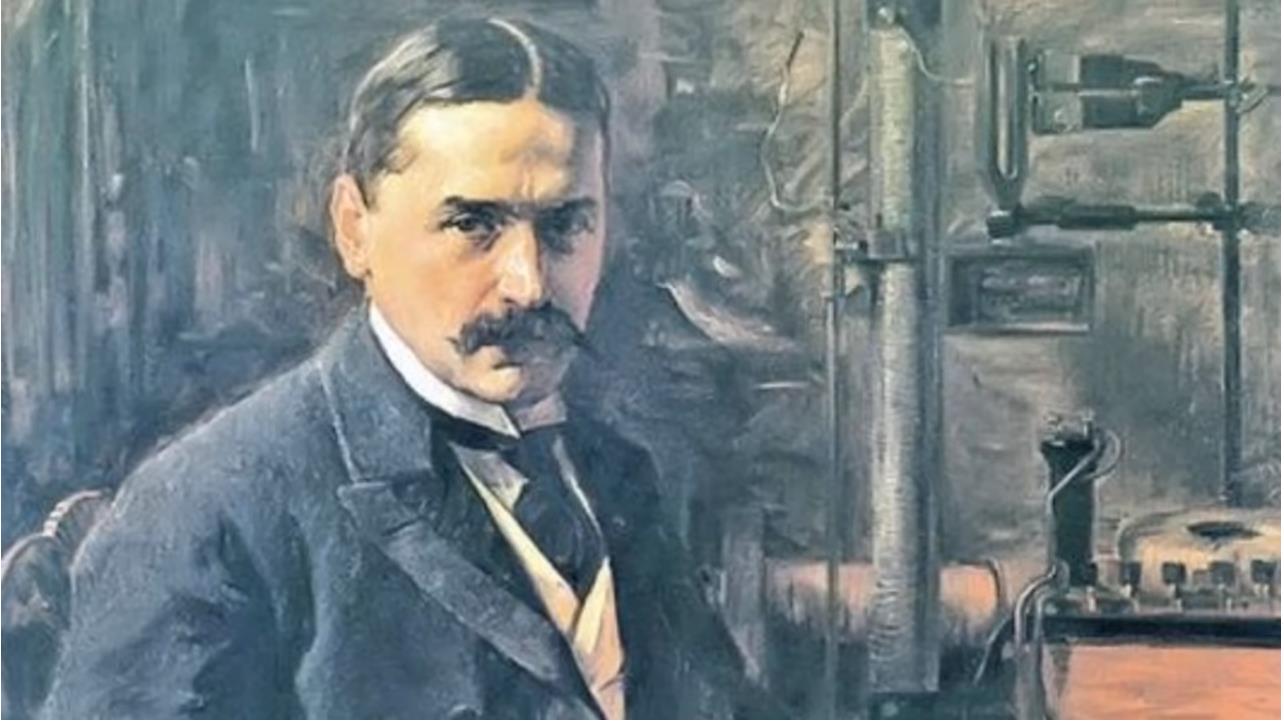
▲ 图1.3.1 霍华德·阿姆斯特朗
四、真空三极管
普平教授在 1906 年参加了一个名叫李·德福雷斯特 (Lee de Forest) 的人的演讲, 他展示了自己发明的真空管,他为其命名为 Audion。 现在,de Forest 的最初的 Audion 与另一个 Fleming 真空管的器件很相似,实际上他就是抄袭 弗莱明的真空管, 为此他被弗莱明起诉侵犯专利权。 没办法 , de Forest 只好费尽心思的要将他的 Audion 与 Fleming 真空管 区分开来,所以他开始在他的真空管内到处增加一些金属电极。

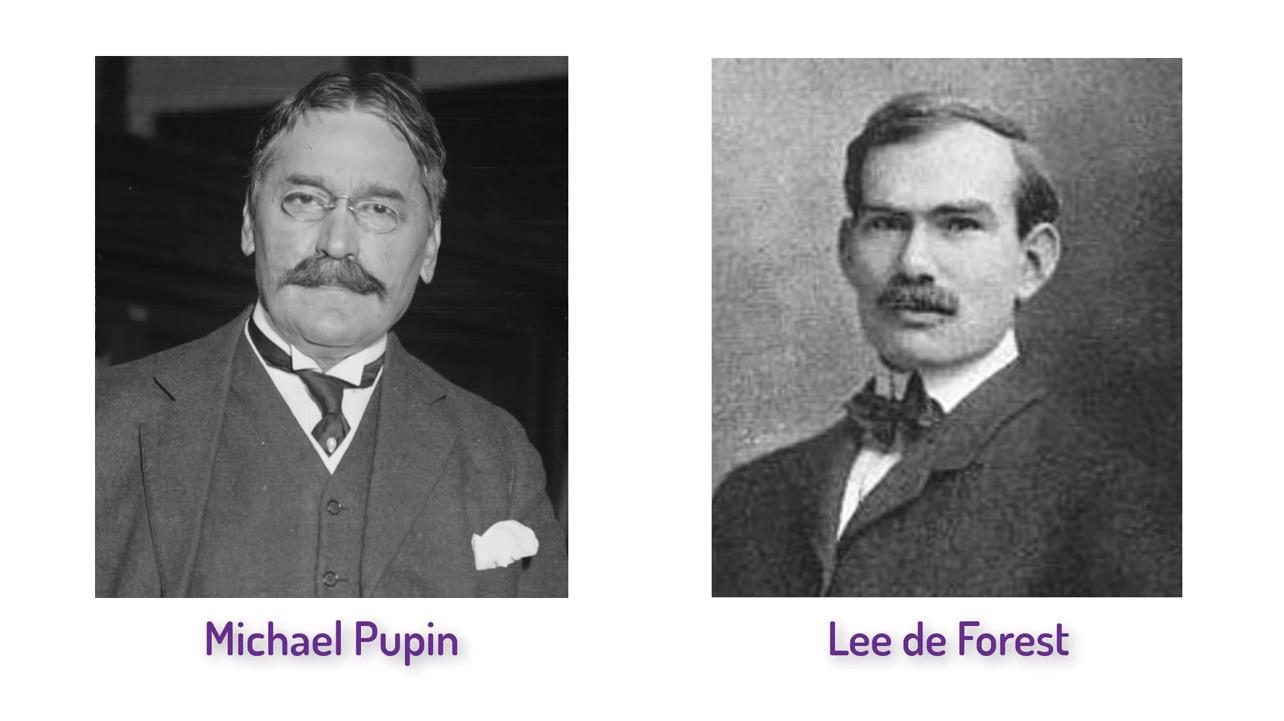
▲ 图1.4.1 迈克·普平与李·德福雷斯特
1907 年 1 月 29 日,de Forest 申请了两项专利, 共有 12 种新管。 其中一个有三个输入,包括阳极,灯丝, 以及它们之间的锯齿形电线,称为栅极。 De Forest 将他所有的电子管都称为 Audion, 但这个很快就被称为真空三极管, triode,tri 代表三,ode 代表路径。


▲ 图1.4.2 真空三极管
三极管的发明的确带来了电子科技的一场革命,它不仅是一个二极管,它还可以完成放大功能。 让我们初步了解一下它的工作原理把。
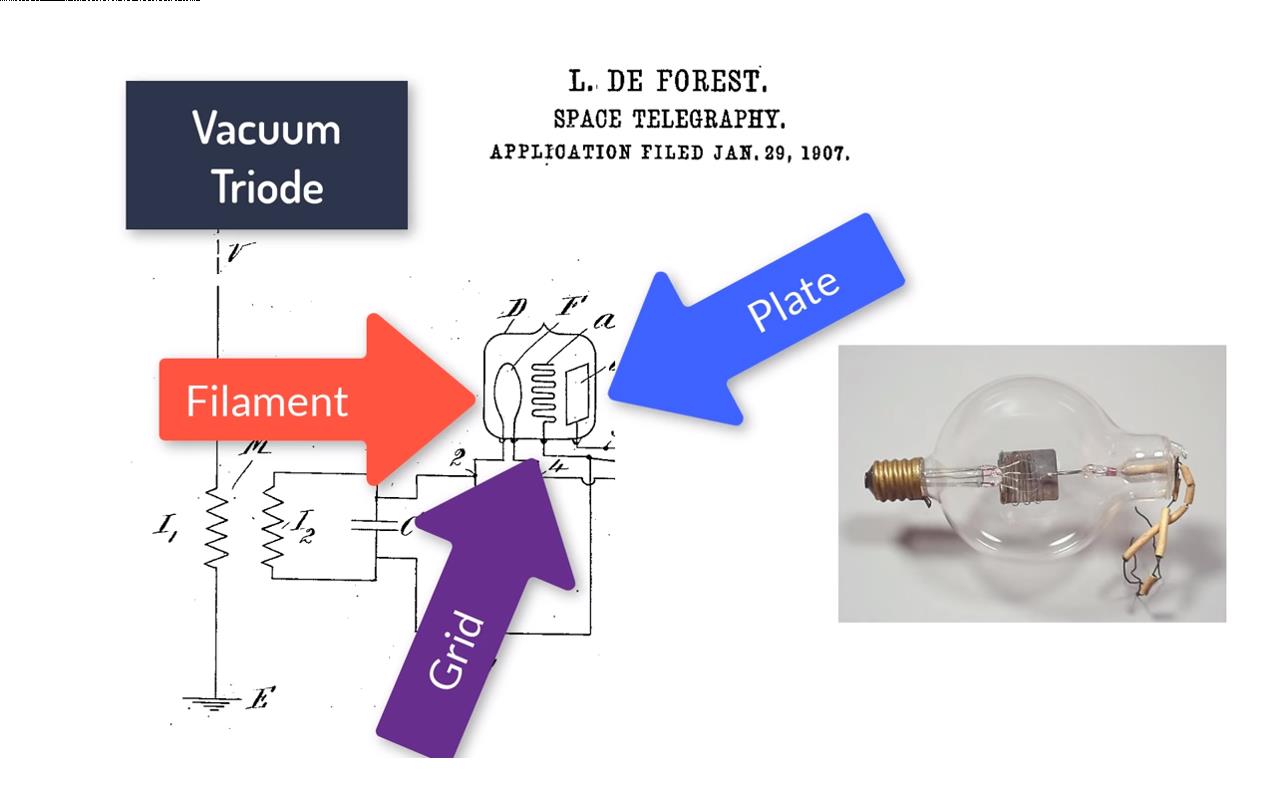
三极管工作时需要使用电池加热阴极灯丝,然后在灯丝和阳极之间通过另外一个高压电池, 加速从阴极到阳极的电子,形成阳极电流。带负电的电子从加热的灯丝上逸出,路过中间的栅极到达阳极。 将需要放大的电压信号施加在栅线和阴极灯丝之间。 如果栅极为正,更多的电子通过栅极到达阳极,阳极输出电流增加了。 如果栅极为负,产生的电场会阻碍电子从灯丝飞行到阳极,阳极输出电流减少。 这样栅极的电压变化会引起阳极电流发生很大的变化。 如果从能量角度来看, 栅极电流很小,所以输入信号功率很小。 阳极电流变化很大,再乘以很高的阳极电压,就会产生很大功率的输出信号,所以三极管可以放大信号的功率。 放大后的音频信号可以通过耳机转换成声音。
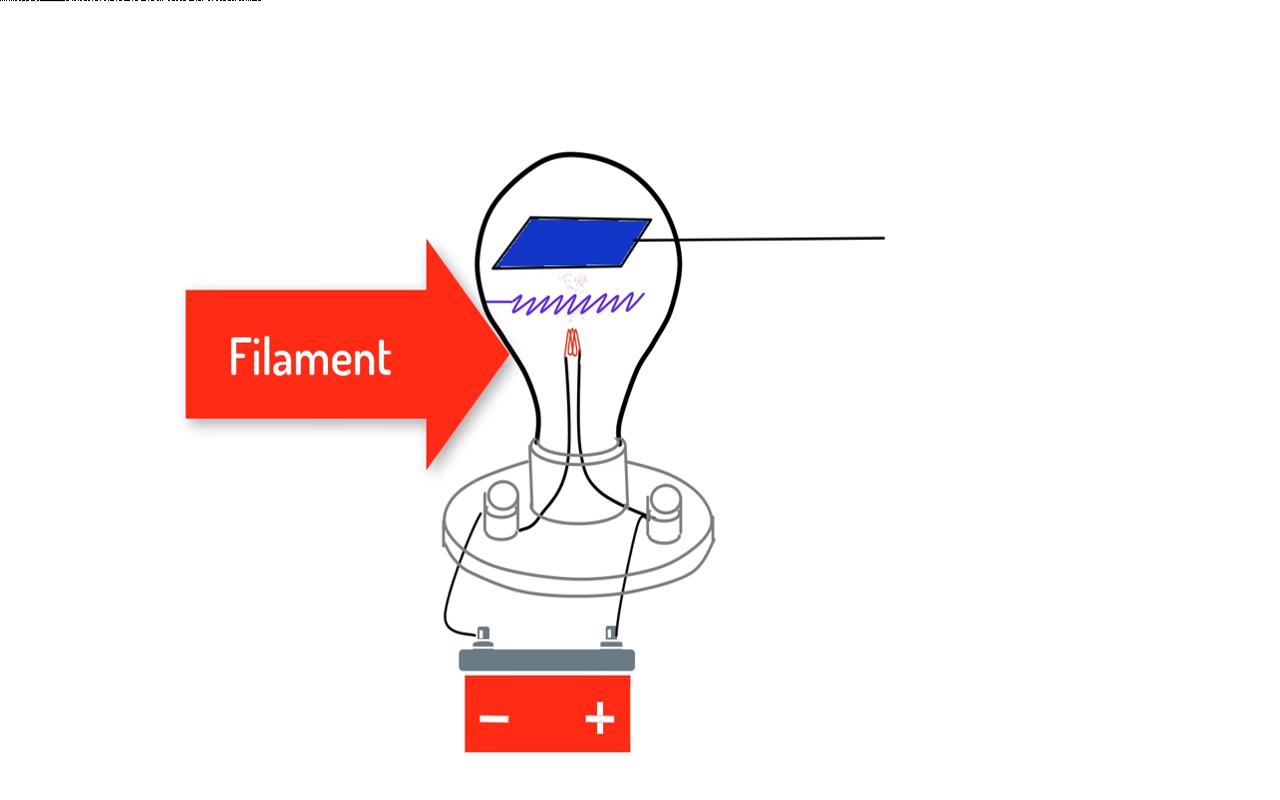
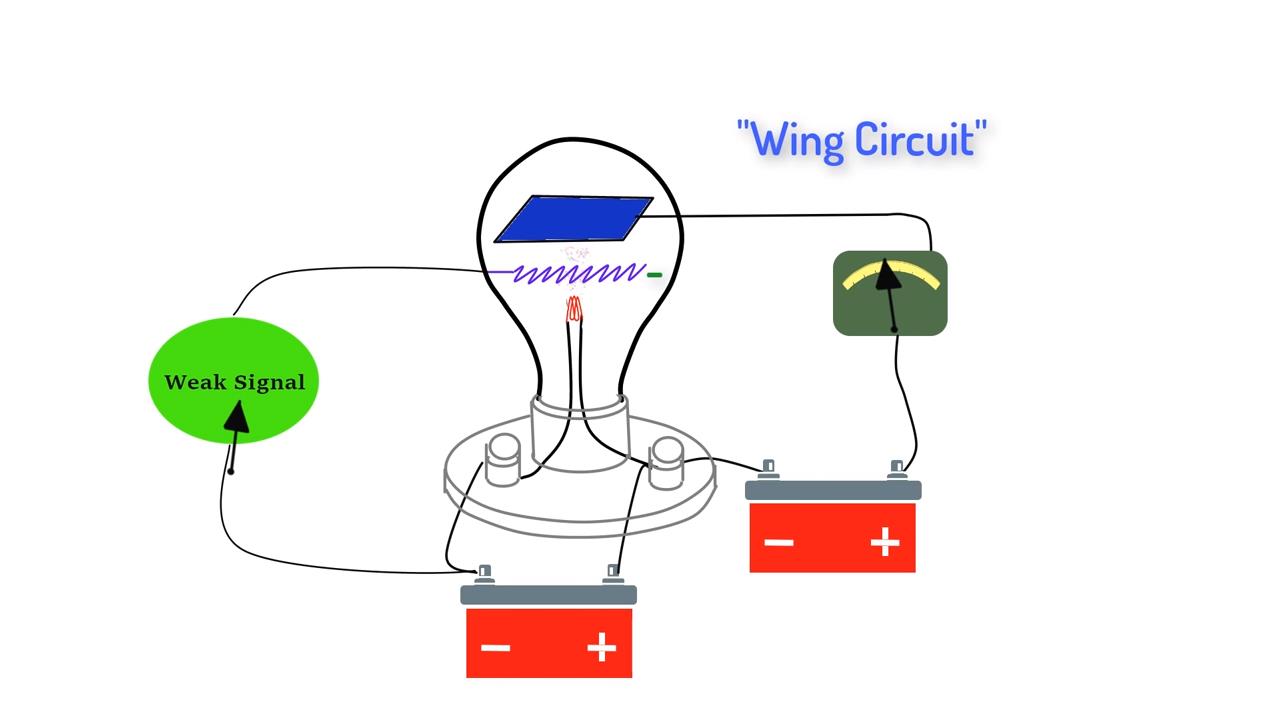
▲ 图1.4.3 真空三极管放大原理
五、LC谐振
德福雷斯特是如何接收到需要放大的无线电信号的呢? 实际上很简单,只需要使用天线就可以接受无线电波。 到 1900 年代, 通常的做法是用两个器件形成谐振电路来选择放大需要接受的无线电信号: 一个器件是由两个由玻璃或空气隔开的金属板构成电容器, 另一个是由线圈构成的电感器。 两块相互绝缘的金属板之所以被称为称为电容器, 因为金属板表面能够存储电荷,它们之间的玻璃或空气可防止电荷从一块板流到另一块板。
线圈之所以重要,有两个原因: 其一,如果电流通过线圈中的电线,它会产生类似于条形磁铁的磁场。 第二,如果线圈内部的磁场发生变化,它会在线圈中感应出新的电流。
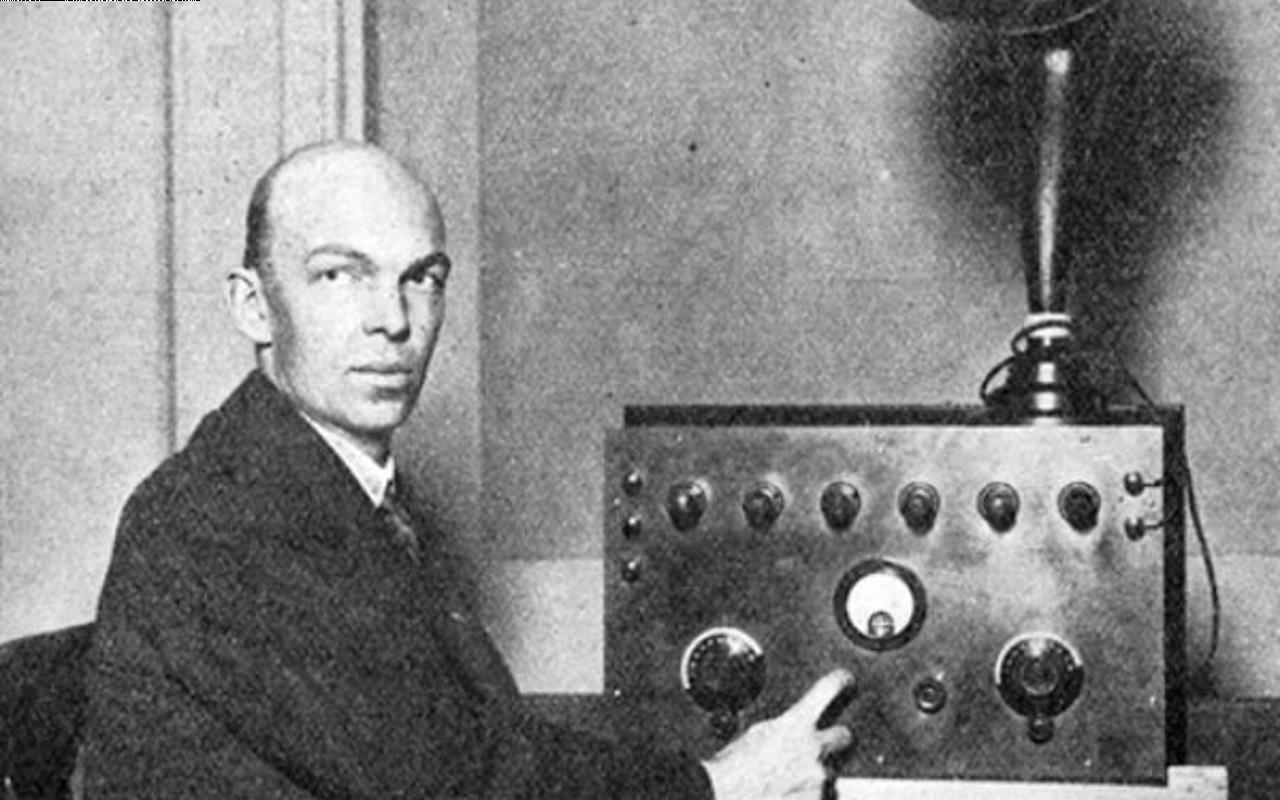

▲ 图1.5.1 电感和电容组成谐振回路
现在,如果电容器表面带电荷,然后通过线圈放电,它会导致线圈中的电流发生变化,从而产生变化的磁场。 变化的磁场又会在线圈中感应出更多电流。 电感中的电流具有类似的“惯性”,它可以相反的方向给电容器充电。 充完电的电容器又会以另一个方向放电,重新开始这个过程。
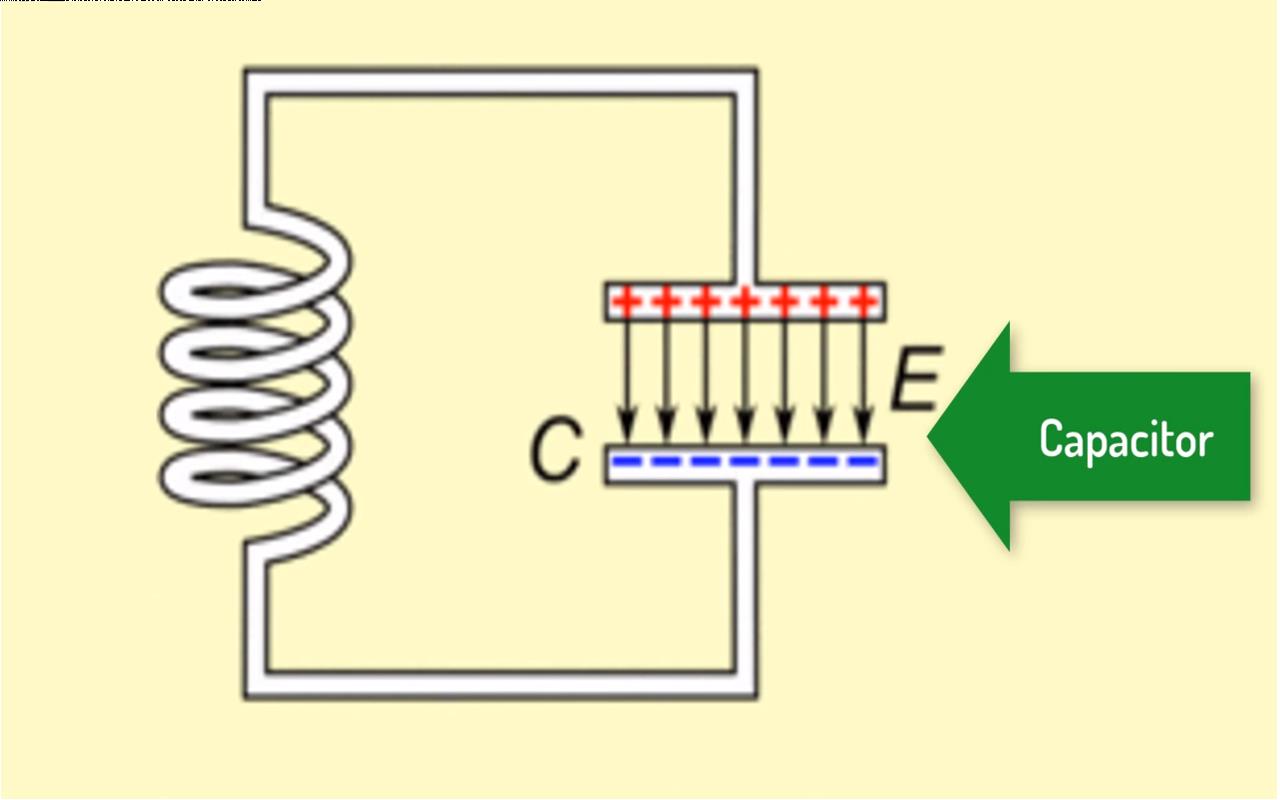
振荡频率取决于线圈和电容器的容量, 分别对应电感线圈的长度和电容器的面积。 如果想调谐你的频率,只需改变线圈的长度或电容器的面积, 使其与无线电信号产生共振。
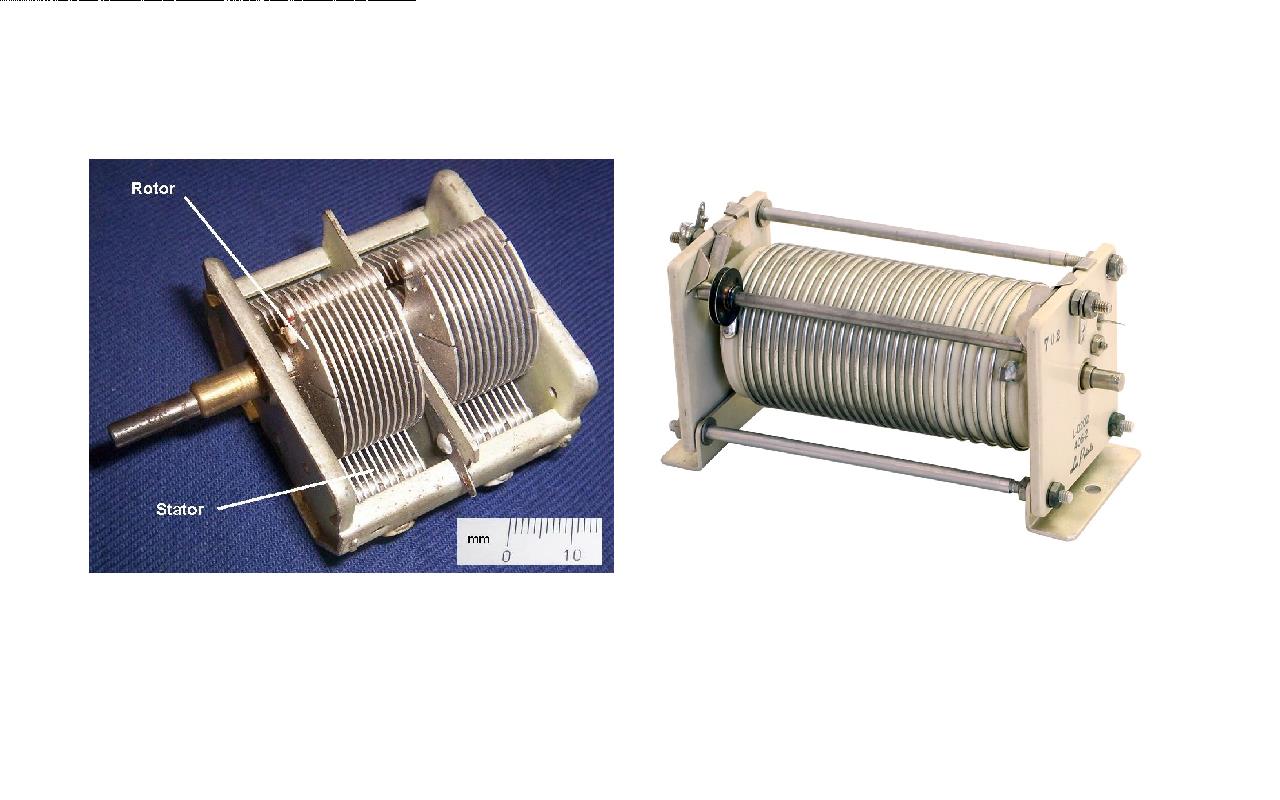
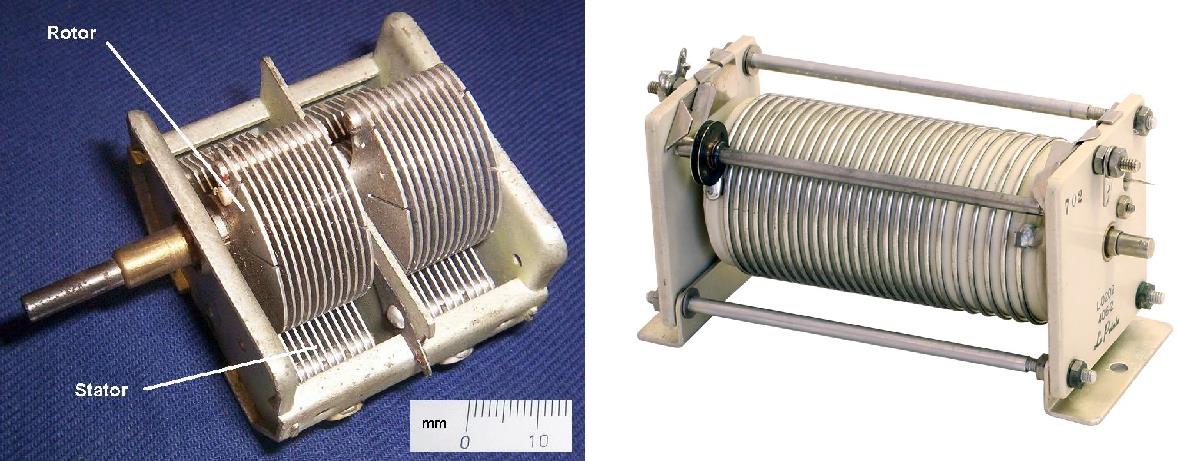
▲ 图1.5.2 可变电容器和电感器
六、真空管放电电路
下面我们再回顾一下 de Forest 如何利用他发明的三极管放大无线电信号的。 用天线接收信号,通过由电容器和线圈组成的调谐回路, 改变调谐回路的谐振频率, 使他与接受的无线电波共振,此时信号幅度最大。然后将该信号施加在三极管的栅极。 他用位于金属板和灯丝之间的回路中的耳机收听了放大后的信号。
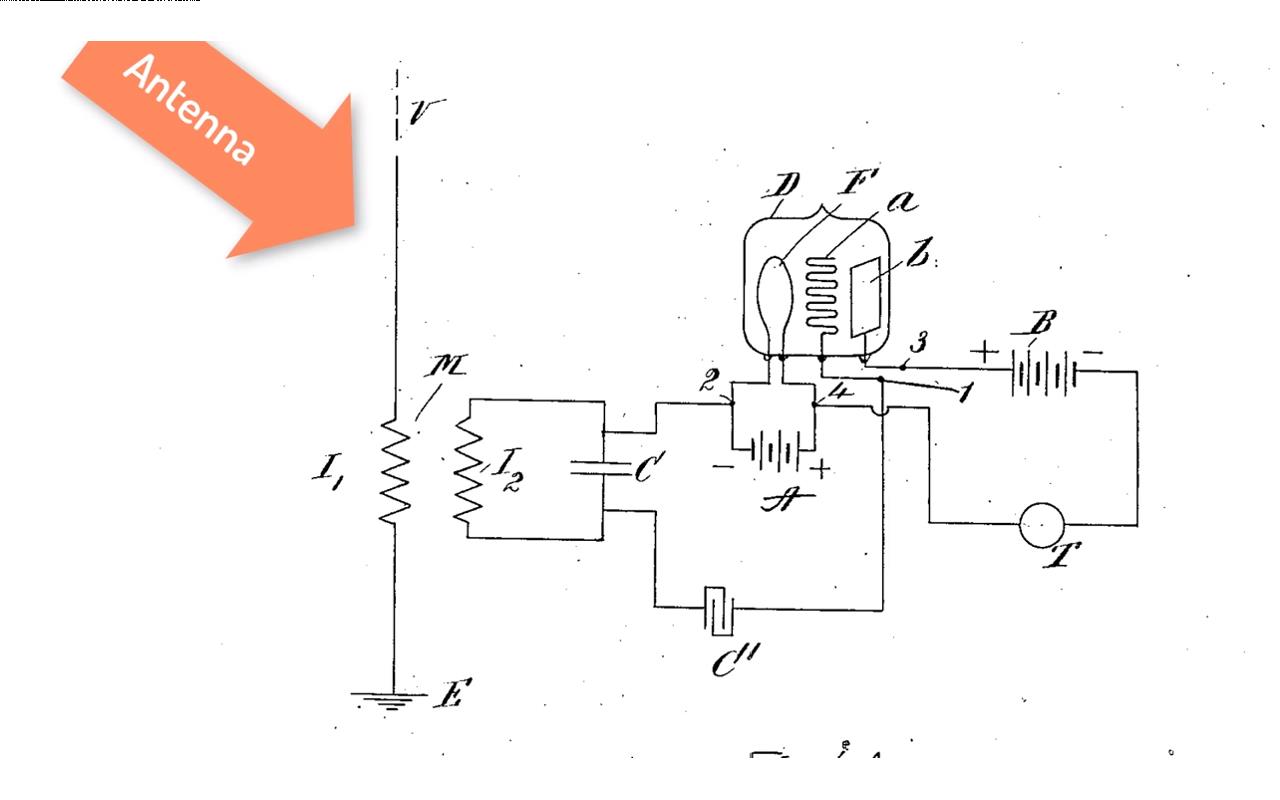
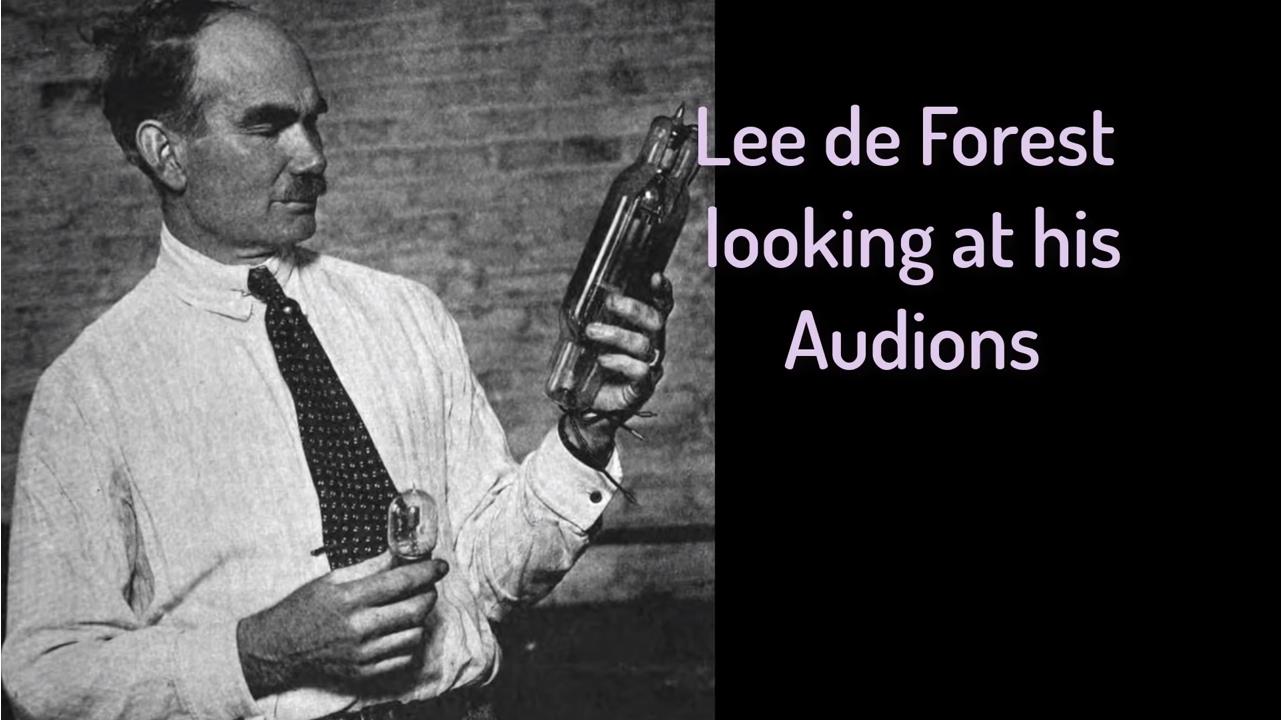
▲ 图1.6.1 李·德福雷斯特与他的真空三极管
De Forest 的电路对 Fleming 真空二极管进行了实质的改进。 然而de Forest 从未使用过阳极输出电路。 此外他还迷信的认为三极管中需要保留微量气体,结果这是画蛇添足,使得三极管在无线电高频下无法正常工作。
De Forest的真空三极管非常脆弱,很容易坏掉。 电极多了使得电路设置复杂。 此外它还非常昂贵,当时的零售价格高达 5 美元,所以它们很不受欢迎。 然而,财大气粗的迈克尔·普平 (Michael Pupin) 在他位于哥伦比亚大学的储备丰富的无线电实验室中有一些。
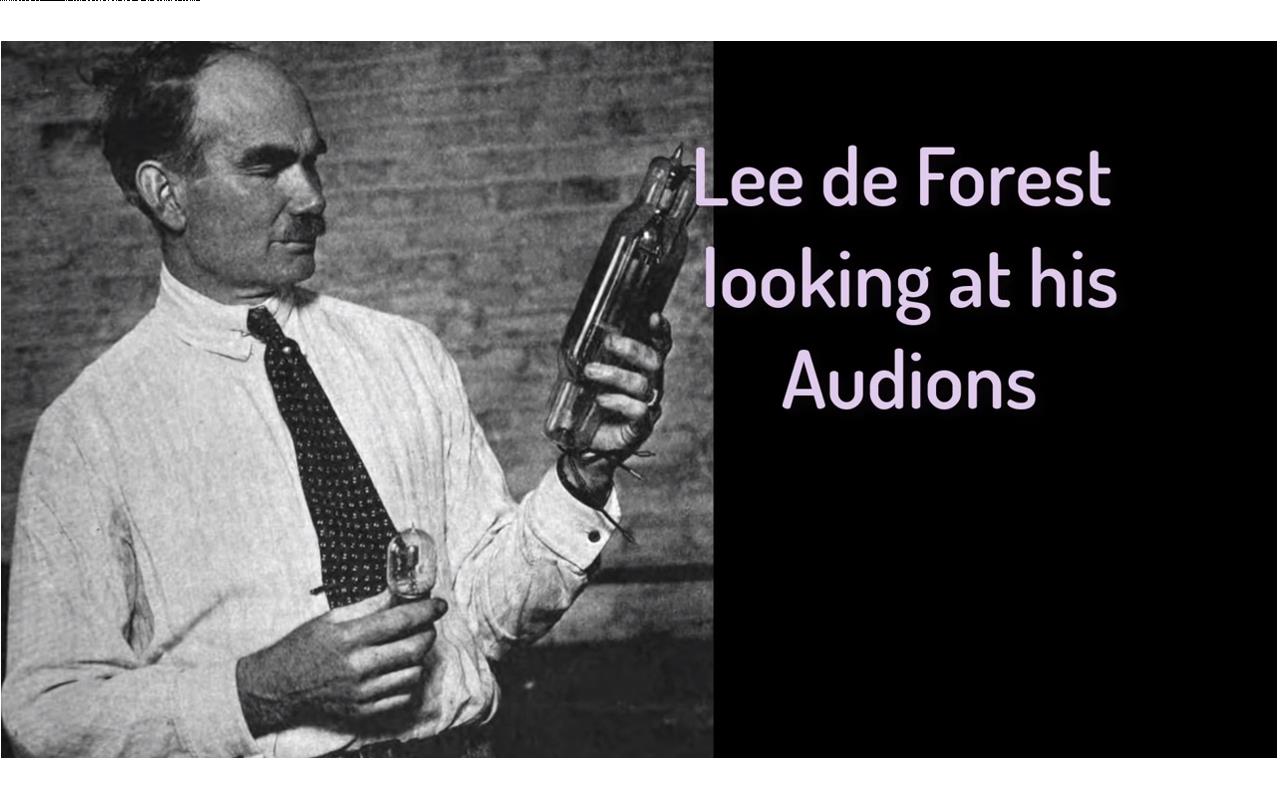

▲ 图1.6.2 迈克·普平教授
七、正反馈
现在再谈谈年轻的霍华德·阿姆斯特朗。 通过 Pupin 阿姆斯特朗在 1911 年左右得到了一个三极管,尽管他大部分时间都在忙于功课,但他还是挤出时间摆弄这些真空三极管组成的电子线路。

1912 年的一天, 他在耳机上加了一个电容器,耳机中的信号变大了一点。 阿姆斯特朗开始怀疑阳极回路中是否存在高频震荡信号。 如果是这样,该怎么办? 有一天他和家人一起外出爬山游玩时,突然想起一个电路设计中常用的方法: “哪里有高频振荡,就增加电感进行谐振。” 他决定尝试通过加一个线圈来调谐接收机的阳极回路。 和家人下了山回到家里,阿姆斯特朗就冲到阁楼实验室进行试验。 顿时,他得到了更强的信号。
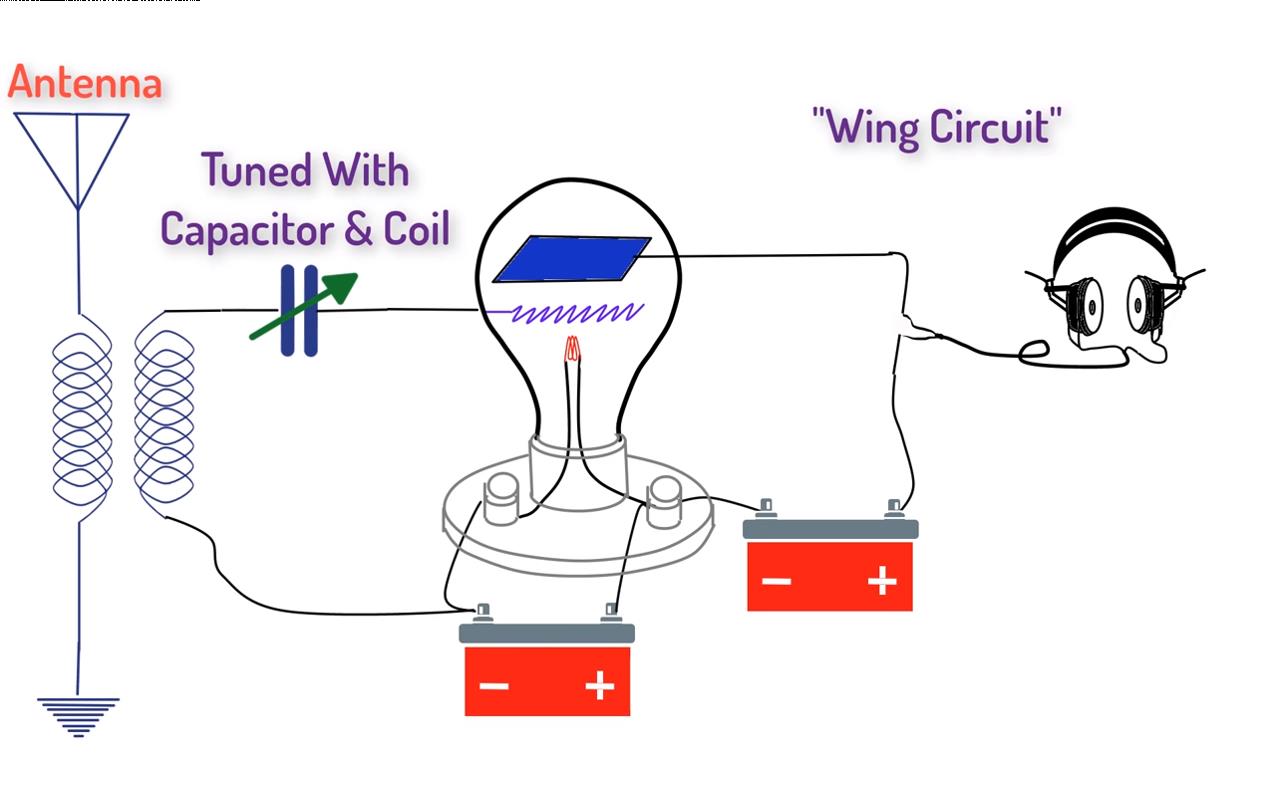
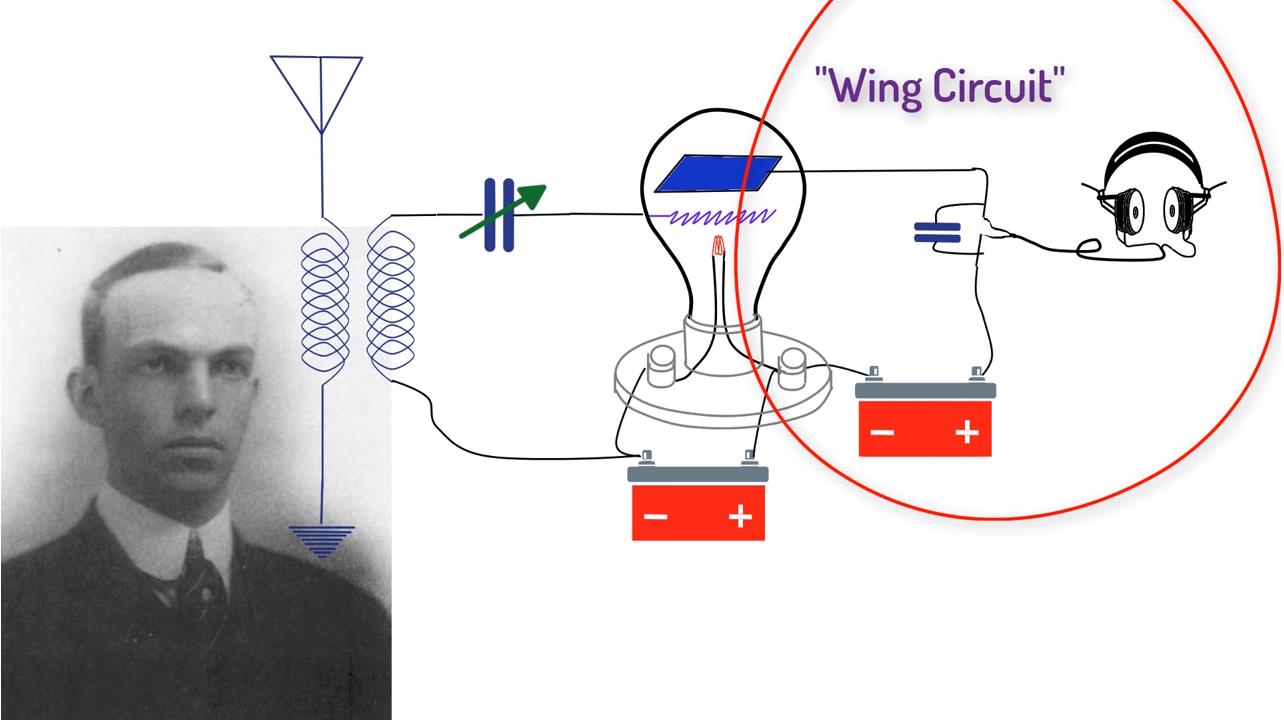
▲ 图1.7.1 阳极回路中的电容和耳机
"霍华德叔叔冲进房间,吵醒了我妈妈,他拿着这个盒子在房间里跳来跳去。 他说:“我做到了,我做到了,我做到了。” 他真做到了,这将带来无线电技术的一场革命。

经过几个月的实验, 改变了不同线圈和电容器的组合,阿姆斯特朗成功地提高了信号。 他可以从阁楼和扬克斯收听来自旧金山、巴西和爱尔兰的无线。 接着他将无线电信号以相同的相位馈入栅极,信号进一步得到放大。 放大的信号又从电子管阳极输出并直接反馈到灯丝中,再次通过真空三极管形成放大。 这个过程称为正反馈或再生。 它将单管的放大倍数从大约 20 倍提高到大约 1000 到 100000 倍。


▲ 图1.7.2 通过正反馈提高了电路的增益
八、震荡电路
在 1912 年的那个重要的夜晚,阿姆斯特朗还注意到了另外一件事。 当他通过改变线圈的长度改变放大信号时,谁知放大的信号消失了,取而代之的是雷人的嘶嘶声。 他很快意识到他的系统不仅可以接收信号,而且还能产生自己的无线电波。
在多年后,普平教授说,“阿姆斯特朗电路的震荡信号,在当时是精度最高的。” 这种震荡频率的稳定性对于使用无线电波传输声音至关重要。

Michael Pupin 再次说道:“毫无疑问,如果没有这项发明,长距离无线电通信和无线电广播是不可能的。”

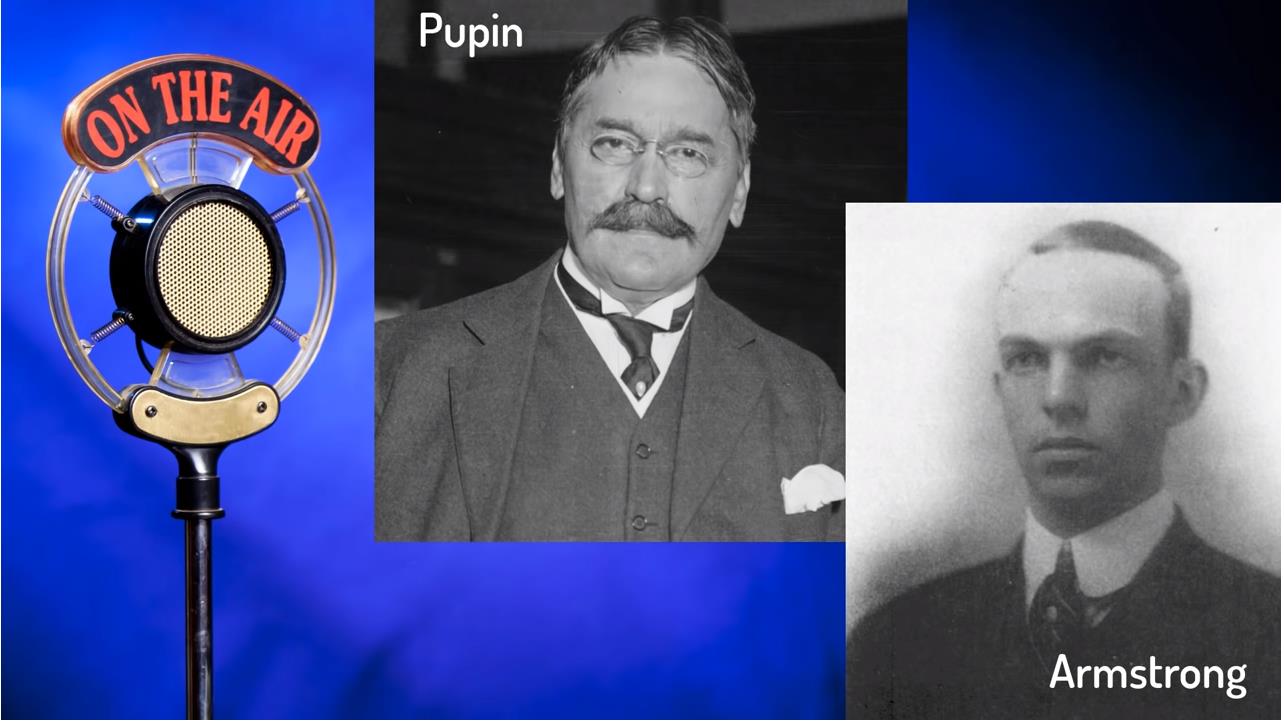
▲ 图1.8.1 普平与阿姆斯特朗
1914 年 1 月 30 日,来自马可尼电报公司的一位名叫大卫·萨尔诺夫的年轻高管会见了阿姆斯特朗, 并观看了实验演示。 他们一整夜都在进行实验, 连续13个小时接受无线电信号。 22 岁的萨尔诺夫觉得阿姆斯特朗拥有“ 当时最好的无线接受装置”。 加下来萨尔诺夫就劝说他的上司来投资真空管收音机, 这可以利用无线电波传输音乐。
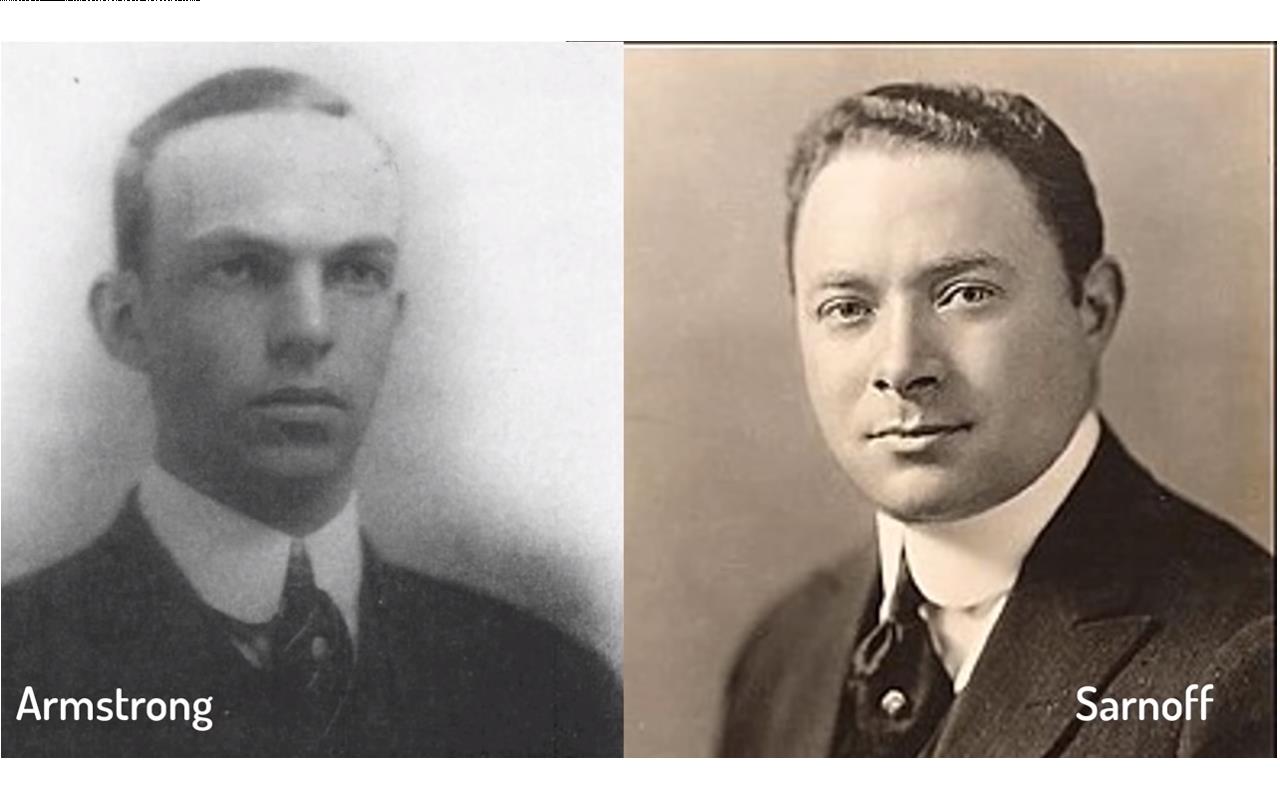
九、后记
正式由于 Sarnoff 的推动,再加上 Armstrong 的另外一项新发明,即超外差式无线电接收机,使得收音机走进千家万户。 这项当时的高科技并让 Sarnoff 和 Armstrong 都获得了巨大的财富,至少在一段时间内是这样。 接下来无线电的发展我们下次再聊。
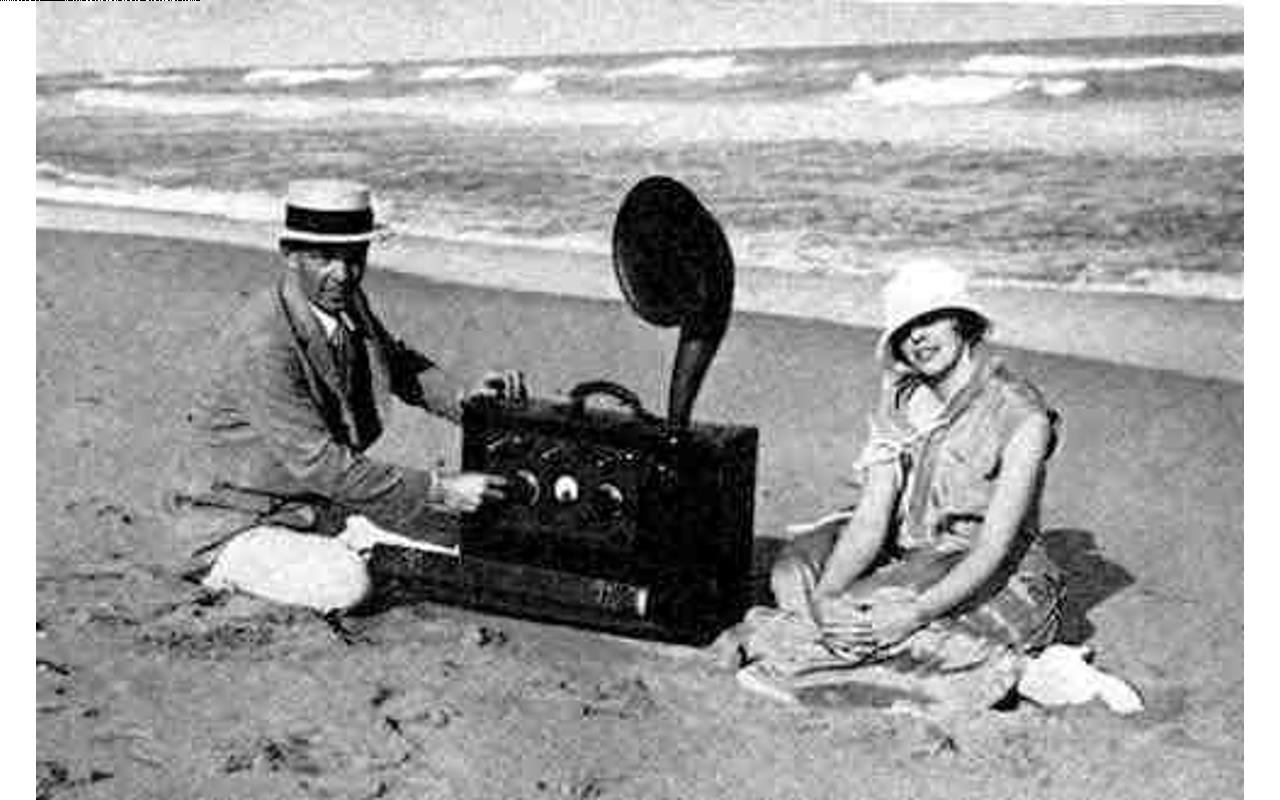
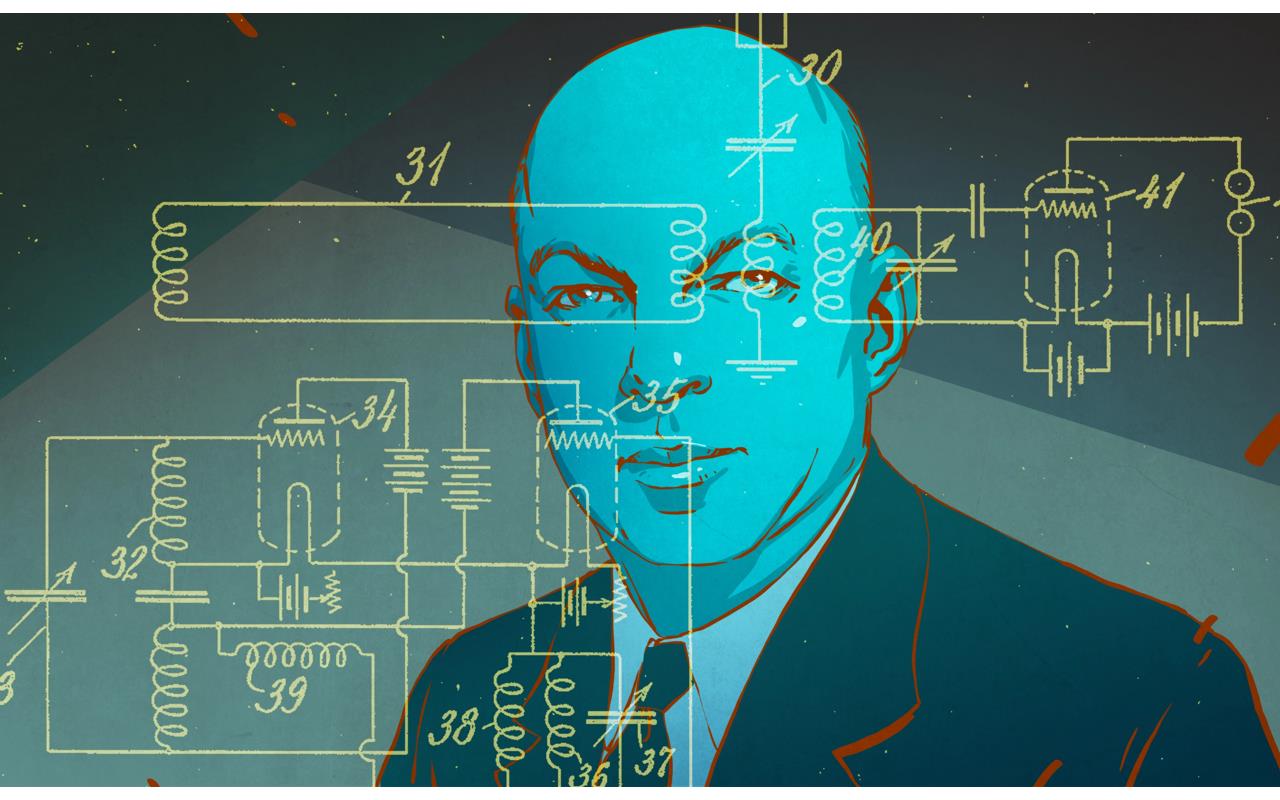
▲ 图1.9.1 无线电的发展
02 英语稿件
一、前言
Positive feedback is when you take a signal and you feed it in a loop so it amplifies itself, and it is a vital part of electrical engineering. But where does it come from and who thought of it first? Well, I happened to know the answer to that. It was invented by a college student named Howard Armstrong in his parents’ attic in 1912. This is a story of a inspirational children’s book, a neighbor who broke all the rules, an immigrant with an inspiring story and a very, very important coil of wire. Ready? Let’s go!.
二、早年时期
Edwin Howard Armstrong grew up in Manhattan and Yonkers to an upper-middle-class family. In 1904, when he was 13 years old, his father gave him “The Boys Book of Inventions”. And after reading about Guillermo Marconi, young Armstrong became enamored of all things wireless. Soon, he was the neighborhood wireless expert. He even built 125-foot antenna that he climbed regularly for fun.
When he was 16, he met a local engineer named Charles Underhill. And for the next two years, Armstrong would bike to Underhill’s house after school to be instructed on the fundamentals of wireless. Armstrong said, however, that the most important lesson was not in the books, but in Underhill’s insistence, that Armstrong was an original thinker and didn’t need to be tied down by what was conventionally known or done.
Later in life, Armstrong supposedly like to say, “It ain’t ignorance that causes all the trouble in the world. It’s all the things people know that ain’t so.”
三、普平教授
Armstrong’s tutelage with Underhill ended when he entered Columbia University to study electrical engineering under Professor Michael Pupin. Pupin was an amazing individual. He had immigrated by himself to America from Serbia 35 years earlier with only 5 cents to his name when he was only 16 years old. He had sold almost all of his possessions to pay for the ticket, including his warm winter coat, figuring that he didn’t need a coat in America as the Native Americans in the drawings we’re so little clothing. He then barely he survived the passage by clinging to the smoke-stack for warmth.
Despite knowing no one, having no marketable skills and not even knowing English, he managed to get a job and within five years he had taught himself English, Greek, and Latin and manage to get a scholarship to go to Columbia. He then got his PhD in Germany from Hermann von Helmholtz, and in 1899 returned to Columbia University as the founder of their electrical engineering department.
At the same time, he sold the patent to AT&T for cool half a million dollars. Despite his new found wealth, he continued to research and study and keep up to date with the latest in electrical technology.
四、真空三极管
For that reason, in 1906 Pupin went to a talk by a man named Lee de Forest who demonstrate a vacuum tube device that he had invented called the Audion. Now, de Forest’s original Audion was very, very similar to another device called a Fleming Valve. And for that reason, he was being sued by Fleming for patent violation. Because de Forest was interested in distinguishing his devices from the Fleming Valve, he started inventing new valves with stray wires all over the place.
On January 29th of 1907, de Forest filed for two patents with a total of 12 new tubes. One of them had three inputs, the plate, the filament, and between them a zigzag of wire called the grid. De Forest called all his tubes Audions, but this one was quick called vacuum triode, tri for three, ode for path.
The triode was revolutionary because it wasn’t just a one-way valve. It was an amplifier and a detector. Let me explain how it worked.
First, you heat up the film and of the bowl with a battery, and then you add a separate battery between the filament and the plate to create current were negatively charged electrons jump off the heated filament past the wire and the onto the positive plate. The signal is then placed between the grid wire and the filament. If the grid is positive, many more electrons will escape the filament increasing the current coming out of the plate called the wing circuit. And if the grid is negative, many electrons will be blocked from jumping to the plate. In this way, small changes in the grid wire make big changes in the current in the wing circuit, which can be detected by headphones.
五、LC谐振
How did de Forest get a radio signal in the first place? Well, anyone can catch a radio wave with an antenna, however, by the 1900s it was common practice to tune your receiver with two items: two metal plates separated by glass or air and a coil. The two metal plates are called a capacitor as the metal surfaces have the capacity to store charges on its surfaces and the glass or air between them keeps the charges from directly flowing from one plate to the other.
A coil of wire is important for two reasons: One, if current goes through a wire in a coil it creates a magnetic field like that from a bar magnet. And two, if the magnetic field inside a coil changes it induces a new current in a coil.
Now, if a capacitor has charges on it surfaces, and then it’s discharged through coil, it will cause the coil to have a change in current in it and thus, create a changing magnetic field, which induces more current in the coil. This extra current charge up the capacitor in the opposite direction, the capacitor then discharges in the other direction starting the process all over again.
The frequency of the oscillation depends on the properties of the coil and the capacitor. So, if you want to tune your frequency, you just change the length of the coil or the area of the capacitor to make it resonate with your radio waves.
六、真空管缺点
To recap, de Forest received a signal with an antenna, tuned his receiver with a coil in the capacitor, until it resonated at the same frequency as his incoming radio wave, and then fed that signal into the grid of a triode. Finally, he listened to the amplified signal with headphones that were in the wing circuit between the plate and the filament.
De Forest’s trial was an improvement over the Fleming valve. However, de Forest never utilized the wing circuit and he was convinced that you needed trace amounts of gas in the tube, which actually made it not work well at radio frequencies.
In addition, the tubes broke easily, they’re confusing the setup and they were very expensive, a whopping $5, so they’re quite unpopular. However, Michael Pupin had a few in his well-stocked radio laboratory at Columbia University.
七、正反馈
Now we go back to young Howard Armstrong. Through Pupin, Armstrong got his hands on a triode in around 1911, and he started playing around with it on the side, although he’s mostly busy with schoolwork.
One day in 1912, he added the capacitor across his headphones and the signal in the headphones got a little louder. Armstrong started to wonder if the wing circuit had high-frequency vibrations in it. And if so, what to do about it? While hiking in the mountains with his family, he was struck by the adage, “Wherever there are high-frequency oscillations tune the circuit”, and he decided to try to tune the wing circuit of the receiver by adding a coil. As soon as their family returned home from vacation Armstrong sprinted to his attic laboratory and tried it out. Instantly, he got much stronger signals.
But then uncle Howard burst into the room, waking my mother up and he was dancing round and round the room with this box and he was saying, “I’ve done it, I’ve done it, I’ve done it.” And done it he had, this was a revolution in radio technology.
After just a few months of playing around with coils and capacitors, Armstrong manage to up the signal so much, he could listen to signals from San Francisco, Brazil, and Ireland, all from his attic and Yonkers. The radio signal was fed to the grid and to the filament at the same time with the same phase so they amplify each other. Then the amplified output was taken from the plate and fed right back into the filament to be amplified by the signal from the grid again.
八、震荡电路
This process is called positive feedback or regeneration. It changed the amplification from a single tube from around 20 times to around a 1,000 to a 100, 000 times stronger.
See the power of a coil, well, right? Armstrong notice something else on that fateful night in 1912. When he amplified the signal by changing the length of the coil, after awhile, the amplification cut out and was replaced by loud hissing noise. He quickly realized that his system was not just receiving signals, but was creating its own radio waves.
Years later, Pupin said that, “Armstrong system maintained its pitch with a degree of accuracy never before obtained by any apparatus constructed by man.” This consistency of note was vital for using radio waves to transmit sound.
Once again, from Michael Pupin, “It goes without saying that long-distance radio communication and radio broadcasting would be impossible without this invention.”
On January 30th, 1914, a young executive from the Marconi Telegraph company named David Sarnoff met with Armstrong for demonstration. They ended up receiving signals throughout the entire cold night, 13 hours straight. The 22-year-old Sarnoff felt that Armstrong had, “The most remarkable system in existence”, and soon Sarnoff tried to get his superiors interested in using vacuum tubes to transmit music into a “Radio music box.”
九、后记
It was Sarnoff’s drive as well as a new invention of Armstrong’s called the super heterodyne. There was to make radio a household item and both Sarnoff and Armstrong’s great fortunes, at least for awhile. And that story is next time, on The Secret History of Electricity. ♪ Electricity ♪ ♪ Electricity ♪ ♪ Electricity ♪ Thanks for watching my video, please remember to give it a nice stump up and also remember to subscribe, that way you will know when the next video gets posted. Okay, have a nice day.
■ 相关文献链接:
● 相关图表链接:
- 图1.1.1 霍华德·阿姆斯特朗
- 图1.2.1 查尔斯·安德希尔
- 图1.3.1 霍华德·阿姆斯特朗
- 图1.4.1 迈克·普平与李·德福雷斯特
- 图1.4.2 真空三极管
- 图1.4.3 真空三极管放大原理
- 图1.5.1 电感和电容组成谐振回路
- 图1.5.2 可变电容器和电感器
- 图1.6.1 李·德福雷斯特与他的真空三极管
- 图1.6.2 迈克·普平教授
- 图1.7.1 阳极回路中的电容和耳机
- 图1.7.2 通过正反馈提高了电路的增益
- 图1.8.1 普平与阿姆斯特朗
- 图1.9.1 无线电的发展
以上是关于正反馈:霍华德·阿姆斯特朗的伟大发明的主要内容,如果未能解决你的问题,请参考以下文章